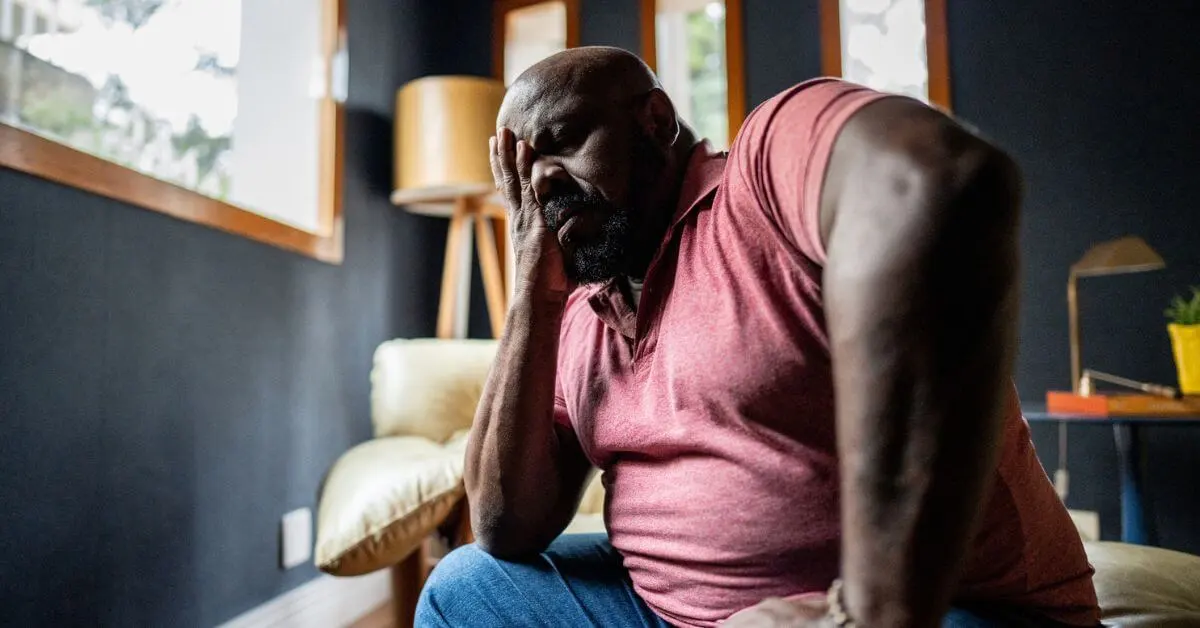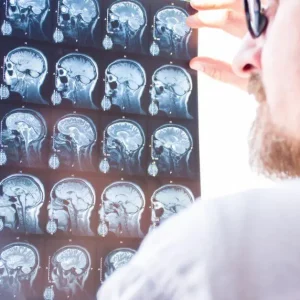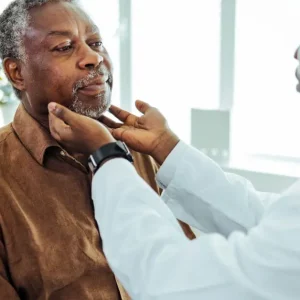An ischemic stroke is a serious health issue that can happen suddenly. This type of stroke occurs when blood flow to the brain is blocked, which can lead to significant complications if not treated right away.
However, knowing what an ischemic stroke is and how to respond can make a world of difference. In this guide, we’ll explore the causes, symptoms, treatments, and ways to reduce your risk – let’s dive in!
What Is an Ischemic Stroke?
An ischemic stroke happens when something blocks the flow of blood to your brain, depriving affected areas of oxygen and other nutrients needed to function. Without a constant supply of oxygen and vital nutrients, brain cells may become damaged and begin to die within minutes. Therefore, an ischemic stroke is considered a critical medical emergency. Unlike a hemorrhagic stroke, which involves bleeding in the brain, ischemic strokes are defined by this interruption in blood supply, usually from a blood clot.
Additionally, ischemic strokes are the most common stroke type, accounting for about 87% of all strokes. Acting fast is critical because timely treatment can save brain tissue and significantly improve recovery.
This is why you might hear the saying “time is brain” when it comes to stroke awareness.
The Two Main Types of Ischemic Stroke
Thrombotic Stroke
A thrombotic stroke occurs when a blood clot forms in one of the brain’s arteries. This often develops gradually due to atherosclerosis, a condition where fatty deposits build up on the artery walls. These blockages can grow over time, eventually cutting off blood flow to a part of the brain.
Although a thrombotic stroke often occurs suddenly, some individuals may experience a gradual onset of symptoms. Others may sustain one or more transient ischemic attacks (TIAs, also called mini-strokes) before a thrombotic stroke occurs.
People with conditions like high blood pressure, high cholesterol, or diabetes are more likely to experience thrombotic strokes. They might even occur while a person is resting or asleep, as blood flow naturally slows during these times.
Embolic Stroke
An embolic stroke happens when a clot or other debris forms in another part of the body—often the heart—and travels to the brain. This type of stroke is often associated with heart conditions like atrial fibrillation, a common irregular heartbeat that can lead to the formation of blood clots in the heart.
Unlike thrombotic strokes, embolic strokes come on suddenly. One moment you might feel fine, and the next, you could experience significant symptoms like difficulty speaking or weakness in one side of your body.
What Causes Ischemic Stroke?
Understanding the causes of ischemic stroke can help you better assess and manage your risk. While there may be many contributing factors, here are a few of the most common causes of ischemic stroke:
Atherosclerosis: The Root of Many Cases
Atherosclerosis is when fatty deposits, or plaques, build up in your arteries, making them narrow or stiff. This restricts blood flow and creates conditions where clots can easily form and block an artery completely. Many conditions may contribute to the development of atherosclerosis, including high blood pressure and high cholesterol.
Cardiac Conditions
Heart issues, especially atrial fibrillation, are a major cause of embolic strokes. When the heart doesn’t beat regularly, it can cause blood to pool and form clots, which can then travel to the brain.
Clotting Disorders
Some people have blood that clots more easily due to genetic factors or medical conditions. These include disorders like Factor V Leiden mutation or antiphospholipid syndrome, which may require careful long-term management.
Recognizing the Symptoms of Ischemic Stroke
When it comes to a stroke, every second counts. Knowing the warning signs and acting fast can make all the difference. The acronym FAST can help you remember the most common symptoms:
- Face drooping: One side of the face may sag, or the person may have trouble smiling evenly.
- Arm weakness: One arm might feel weak or numb, and the person may not be able to lift one arm fully or keep it from falling back down.
- Speech difficulty: Speech may be slurred, or the person might have trouble understanding you.
- Time to call emergency services: If you notice these signs, call for help immediately.
Other symptoms to watch for include:
- Sudden confusion or trouble understanding others
- Vision problems, such as blurriness or blindness in one or both eyes
- Loss of coordination or balance, making walking difficult
- A sudden, severe headache that feels unlike any you’ve had before
Quick action is essential. The faster someone gets medical attention, the better their chances of recovery.
The artery most commonly involved in ischemic stroke is the middle cerebral artery, which supplies blood to the frontal, parietal, and temporal lobes of the brain, as well as some deeper brain structures. Similar to the stroke warning signs listed above, individuals usually display one-sided weakness, facial paralysis, and a loss of sensation in the face and/or arms when a blockage occurs in the middle cerebral artery.
Who’s at Risk for an Ischemic Stroke?
There are several factors that can increase your likelihood of having an ischemic stroke. Some you can control, while others are out of your hands.
Risk Factors You Can Control
- High blood pressure: The number-one risk factor for stroke. Keeping your blood pressure in check by exercising regularly, eating a healthy diet, taking medication, and/or using other management techniques can dramatically reduce your risk.
- Smoking: Smoking damages blood vessels and makes blood more likely to clot. Quitting smoking is one of the best things you can do for your overall health.
- Diabetes: High blood sugar damages blood vessels over time, increasing the risk of clots. Actively managing blood sugar levels and taking steps to combat type 2 diabetes can reduce stroke risk.
- High cholesterol: Excess LDL cholesterol contributes to plaque buildup in your arteries, which can narrow the arteries and/or lead to clot formation.
- Physical inactivity: Regular exercise improves circulation and helps keep your heart and blood vessels healthy.
- Obesity: Carrying extra weight, especially around your midsection, puts strain on your cardiovascular system.
- Stress: Chronic, long-term stress can result in high blood pressure and high blood sugar levels, both of which are associated with ischemic stroke.
- Alcohol intake: While light alcohol consumption may lower the risk of ischemic stroke, heavy drinkers who reduce their intake to 1-2 drinks per day can lower their ischemic stroke risk by as much as 17%.
Risk Factors You Can’t Control
- Age: Stroke risk increases as you get older, especially after age 55.
- Gender: While men have a slightly higher risk of stroke, women are more likely to die from one.
- Family history: If strokes run in your family, your chances are higher.
- Ethnicity: African Americans and Hispanics are at a higher risk, partly due to the higher rates of conditions like hypertension in these populations.
- Certain medical conditions: Some inherited conditions, such as sickle cell disease, can increase the risk of stroke.
While you can’t change certain risk factors, managing the ones you can has a huge impact on your overall stroke risk.
How Is Ischemic Stroke Diagnosed?
When someone arrives at the hospital with stroke symptoms, doctors act quickly to confirm the diagnosis and determine the best treatment.
The Diagnostic Process
- Physical examination: A doctor will assess your symptoms, check for signs like arm weakness or slurred speech, and review your medical history.
- CT scan: This imaging test helps identify whether the stroke is ischemic (caused by a blockage) or hemorrhagic (caused by bleeding).
- MRI: A more detailed scan of the brain that can pinpoint the affected areas and show the extent of the damage.
- Blood tests: These tests look for clotting issues, abnormal blood sugar levels, and other factors that might contribute to stroke.
- Electrocardiogram (ECG): This test detects heart rhythm problems, such as atrial fibrillation, that could have caused the stroke.
- Carotid ultrasound: This test uses sound waves to check for blockages or narrowing in the carotid arteries, which supply blood to the brain.
The faster a stroke is diagnosed, the sooner treatment can begin, which is critical for minimizing long-term effects.
How Is Ischemic Stroke Treated?
Treatment for ischemic stroke focuses on restoring blood flow to the brain as quickly as possible and preventing further damage.
Emergency Treatments
- Thrombolytic therapy: A medication called tPA (tissue plasminogen activator) can dissolve blood clots and restore blood flow if administered within 3 to 4.5 hours of stroke onset. The limited time-frame in which this medication can be administered highlights the importance of seeking emergency services in a timely manner.
- Mechanical thrombectomy: In severe cases, a doctor may use a catheter to physically remove the clot. This procedure is typically done within six hours but can sometimes be performed up to 24 hours after symptoms begin.
Long-Term Management
- Antiplatelet medications: Drugs like aspirin help prevent new clots from forming.
- Anticoagulants: For those with conditions like atrial fibrillation, medications like warfarin or apixaban are used to prevent future clots.
- Blood pressure management: Controlling high blood pressure reduces the risk of a second stroke.
- Cholesterol-lowering drugs: Statins reduce plaque buildup and stabilize existing plaques.
Rehabilitation often begins as soon as possible to help the person regain skills and independence.
Recovering After an Ischemic Stroke
Recovery from an ischemic stroke varies from person to person, depending on the severity of the stroke and how quickly treatment was received.
Rehabilitation Options
- Physical therapy: Helps with mobility, balance, and strength, especially if one side of the body has been affected.
- Occupational therapy: Focuses on regaining everyday skills like dressing, cooking, and writing. May also include learning how to use adaptive tools to increase independence.
- Speech therapy: Aids those who have difficulty with speaking, language comprehension, swallowing, or cognition.
- Emotional support: Counseling or support groups can help with the emotional challenges of recovery, such as depression or anxiety.
Stroke recovery takes time, patience, and support, but many people make significant progress with the right care.
Tips for Preventing Ischemic Stroke
The good news is that many strokes can be prevented by adopting healthier habits and managing underlying conditions.
- Keep your blood pressure in check: Aim for less than 120/80 mmHg. Regular monitoring and medication (if prescribed) can help.
- Eat a heart-healthy diet: Focus on whole foods like fruits, vegetables, whole grains, and lean proteins. Limit salt, sugar, and saturated fats.
- Exercise regularly: Even 30 minutes of walking most days can make a big difference.
- Quit smoking: It’s never too late to stop. Seek help if you need it.
- Limit alcohol: If you drink, do so in moderation—one drink a day for women, two for men.
- Manage chronic conditions: Take steps to control diabetes, high cholesterol, and other health issues.
By making these changes, you’ll not only lower your stroke risk but improve your overall quality of life.
Final Thoughts
An ischemic stroke is a serious condition, but early recognition and timely intervention can make a significant difference in outcomes. Managing risk factors through lifestyle changes and medical care is essential for prevention. If you or someone you know experiences symptoms of a stroke, act immediately by calling emergency services. Your swift action could save a life.
By staying informed and proactive, you can protect yourself and your loved ones from the devastating effects of an ischemic stroke.















